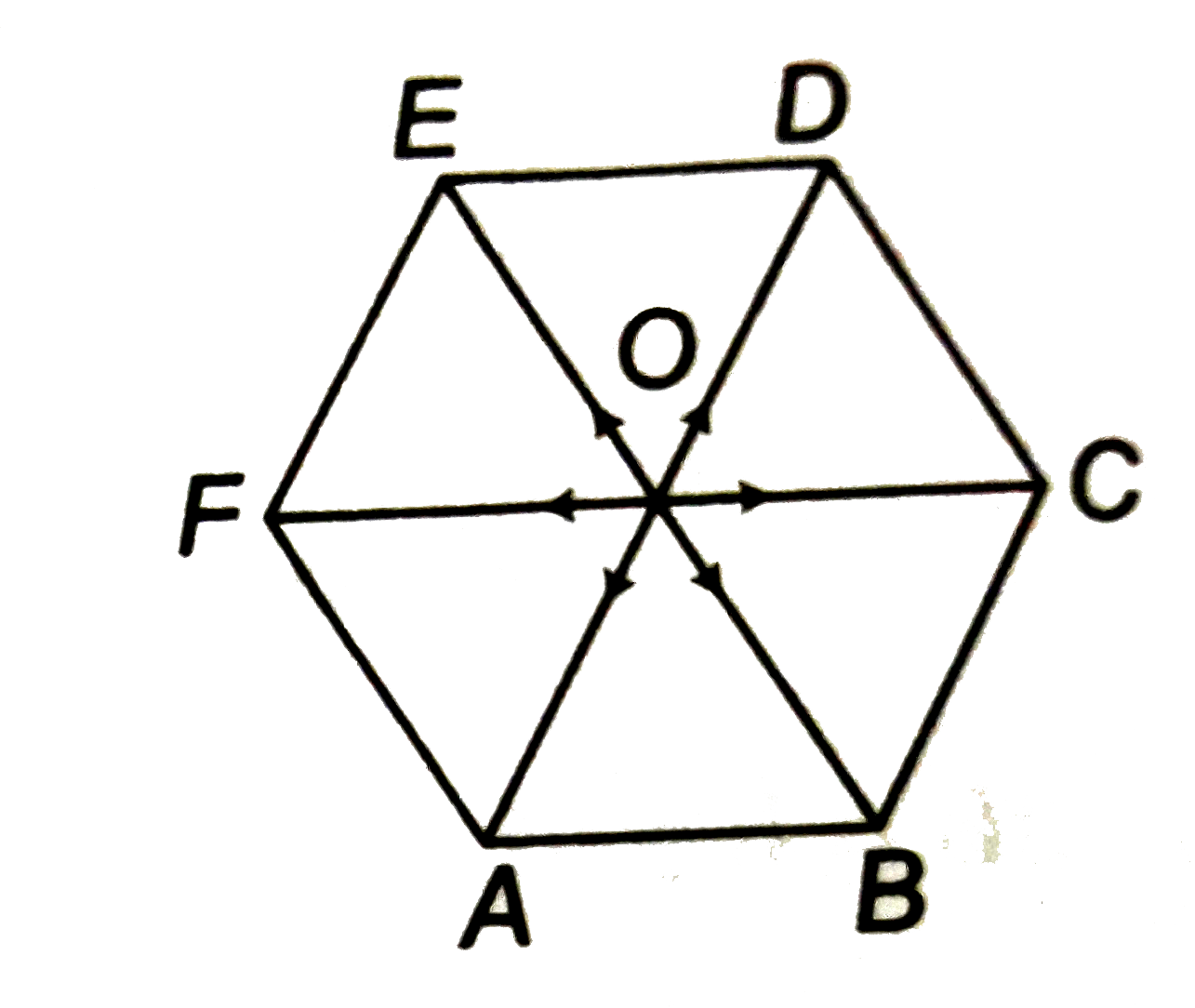In a regular hexagon Solution in Punjabi
The correct Answer is:A
As in figure, ,
So,

Now,
Topper's Solved these Questions
- BOOK - ARIHANT MATHSCHAPTER - VECTOR ALGEBRAEXERCISE - Exercise For Session 17videos
VECTOR ALGEBRA
- BOOK - ARIHANT MATHSCHAPTER - VECTOR ALGEBRAEXERCISE - Exercise For Session 217videos
VECTOR ALGEBRA
- BOOK - ARIHANT MATHSCHAPTER - TRIGONOMETRIC FUNCTIONS AND IDENTITIESEXERCISE - Exercise (Questions Asked In Previous 13 Years Exam)18videos
TRIGONOMETRIC FUNCTIONS AND IDENTITIES
Similar Questions
Classify the following measure as scalar and vector: 10Kg
05:08View SolutionIf a=2ˆi−ˆj+2ˆkandb=−ˆi+ˆj−ˆk, then find a+b. Also, find a unit vector along a+b.
05:17View SolutionLet αandβ be non-zero real numbers such that 2(cosβ−cosα)+cosαcosβ=1. Then which of the following is/are true ?
02:00View SolutionABCDE is pentagon, prove that →AB + →BC + →CD + →DE+→EA = →0 →AB+→AE+→BC+→DC+→ED+→AC=3→AC
01:01View SolutionStatement 1: →a,→b,and→c are three mutually perpendicular unit vectors and →d is a vector such that →a,→b,→cand→d are non-coplanar. If [→d→b→c]=[→d→a→b]=[→d→c→a]=1,then→d=→a+→b+→c Statement 2: [→d→b→c]=[→d→a→b]=[→d→c→a]⇒→d is equally inclined to →a,→b,→c.
01:23View SolutionIn a regular hexagon ABCDEF, −−→AB=a, −−→BC=→b , −−→CD=c Then\ →AE=
02:57View SolutionABCDEF si a regular hexagon with centre at the origin such that A→D+E→B+F→C=λE→D. Then, λ equals
06:38View SolutionIf (→a×→b)×(→b×→c)=→b,where→a,→b,and→c are nonzero vectors, then 1.→a,→b,and→c can be coplanar 2.→a,→b,and→c must be coplanar 3.→a,→b,and→c cannot be coplanar 4.none of these
04:52View SolutionABCDE is pentagon, prove that →AB + →BC + →CD + →DE+→EA = →0 →AB+→AE+→BC+→DC+→ED+→AC=3→AC
05:40View SolutionABCDE is pentagon, prove that →AB + →BC + →CD + →DE+→EA = →0 →AB+→AE+→BC+→DC+→ED+→AC=3→AC
02:52View SolutionABCDE is pentagon, prove that →AB + →BC + →CD + →DE+→EA = →0
05:08View SolutionABCDE is pentagon, prove that →AB+→AE+→BC+→DC+→ED+→AC=3→AC
04:09View SolutionIf →a, →b are the vectors forming consecutive sides of a regular of a regular hexagon ABCDEF, then the vecrtor representing side CD is
a.→a+→b b. →a−→b c. →b−→a d. −(→a+→b)03:48View SolutionIn a regular hexagon ABCDEF, A→B=a, B→C=→b and →CD=c Then\ →AE=
a.→a+→b+→c b. 2→a+→b+→c c. →b+→c d. →a+2→b+2→c04:27View SolutionIf →a, →b, →c and →d are the position vectors of points A,B, C, D such that no three of them are collinear and →a+→c=→b+→d, then ABCD is a a. rhombus b. rectangle c. square d. parallelogram
01:55View SolutionABCDEF si a regular hexagon with centre at the origin such that A→D+E→B+F→C=λE→D. Then, λ equals
04:49View Solution
